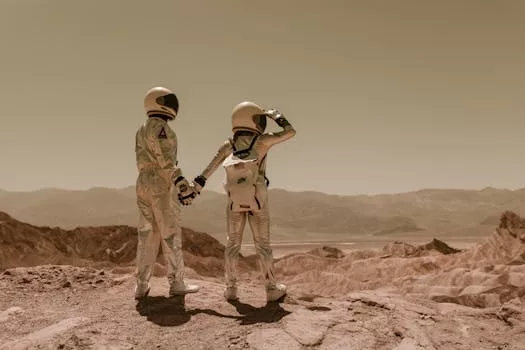
“
From Stardust to Dreams: Imagining Life Beyond the Stars
Introduction to the Cosmos and Human Curiosity
From Stardust to Dreams: Imagining Life Beyond the Stars, our journey begins with the fundamental building blocks of our universe: stardust. The cosmos, with all its mysteries, has captivated human imagination since the dawn of time. The night sky, with its twinkling stars and whispering planets, has inspired generations to explore, to discover, and to dream of what lies beyond our terrestrial bounds.
The concept of life beyond Earth, whether in the form of microbial organisms or advanced civilizations, challenges our current understanding of biology, physics, and the very fabric of existence. As we delve into the unknown, we are forced to confront our own vulnerabilities and the infinite possibilities that the universe presents.
Understanding Stardust and the Cosmic Dance
Stardust, the remnants of stars that have lived and died, carries the history of our galaxy within it. These elements, forged in the heart of celestial bodies, are the raw materials from which planets, including Earth, were formed. The study of stardust and cosmic elements gives us a glimpse into the formation and evolution of our solar system and the potential for life to emerge elsewhere.
The search for life beyond Earth takes us on a journey through the cosmos, exploring various celestial bodies and their potential to harbor life. From the moons of Jupiter and Saturn, with their subsurface oceans and potential for hydrothermal activity, to exoplanets that orbit within the habitable zones of their respective stars, the possibilities are vast and intriguing. For more on this topic, check out Charting New Realms.
Imagining Life Beyond the Stars
As we explore the cosmos, we are not just searching for life; we are also imagining the possibilities of what life could be. The discovery of exoplanets, some of which are eerily similar to Earth, prompts us to consider the likelihood of parallel evolution or the possibility of life forms that defy our current understanding of biology. This exploration is beautifully captured in Soaring Through the Cosmos.
Science fiction often serves as a catalyst for scientific inquiry, inspiring generations of scientists and engineers to pursue the impossible. From the concept of wormholes and faster-than-light travel to the idea of alien civilizations and interstellar communication, our imagination knows no bounds when it comes to the cosmos.
Takeaways and Future Directions
- The exploration of space and the search for life beyond Earth are driven by human curiosity and the desire to understand our place in the universe.
- Stardust and cosmic elements hold the key to understanding the formation and evolution of our solar system and the potential for life to emerge elsewhere.
- The discovery of exoplanets and the exploration of celestial bodies within our solar system are crucial steps in the search for life beyond Earth.
- Imagination and science fiction play a significant role in inspiring scientific inquiry and exploring the possibilities of life in the cosmos.






